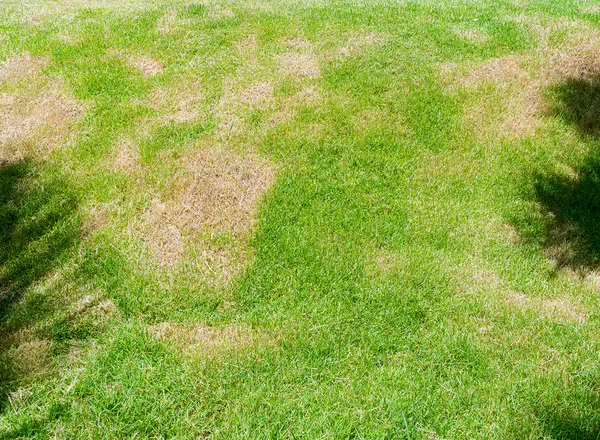
Managing Patch Disease in Lawns
Summer patch, Magnaporthe poae, and necrotic ring spot, Leptosphaeria korrae, are two separate diseases which attack turfgrass roots and previously were referred to as fusarium blight. Research continues to look for information on these diseases. Brown patch, Rhizoctonia solani, may also attack lawns. These "patch diseases" are similar in appearance and management.
Summer patch and brown patch tend to be most active in hot weather, while necrotic ring spot tends to be most active in late spring and in fall. Disease symptoms often show under lawn stress in summer, however. Crescent shaped or circular patches of dead grass, often with clumps of green grass inside, are a characteristic symptom (called frogeye). Lawns with advanced disease development may show irregular dead areas and streaks.
The best way to know if you are dealing with a patch disease and what type is to submit a sample to the University of Illinois Plant Clinic for lab testing.

Patch diseases typically develop on lawns with stress factors such as excessive thatch, poor soil conditions, sod installed over a poorly prepared site, irregular/excessive nitrogen fertility, and related problems. One typical situation in which these diseases occur is recently sodded lawns (within 2 - 5 years) put down over a clay soil, usually with good care (high watering & fertility) to keep the grass green and vigorous. This condition leads to poor root penetration and development, and also often a problem thatch layer.
Management of Patch Diseases
Management of these diseases consists of correcting soil problems and implementing proper cultural practices, overseeding dead areas, and possibly fungicide applications. Improving conditions for root growth and reducing problem thatch is critical. Practices such as core aerifying and topdressing, along with sound fertilizing, mowing (avoid mowing too short), and watering, are suggested. Light, frequent irrigation may help reduce stress of summer patch.
Core cultivation (aerifying) will help improve soil conditions and reduce thatch. Spring and fall are suggested times for aerifying, assuming lawns are actively growing. Avoid heavy spring applications of nitrogen fertilizer. Focus most applications on the fall period. Fertilizers containing controlled-release nitrogen are suggested. Overseed dead areas with perennial ryegrass, resistant Kentucky bluegrass cultivars, or turf-type tall fescue in late August or early September.
These management suggestions may not bring immediate results, but get patch diseases under control in the long run. Fungicides are an option to help prevent further development on unaffected grass, but will not reverse the factors causing the disease or eliminate the disease. Fungicides treat the symptoms but not the cause of the problem. Active ingredients for treating patch disease include: myclobutanil, propiconazole, and thiophanate-methyl.